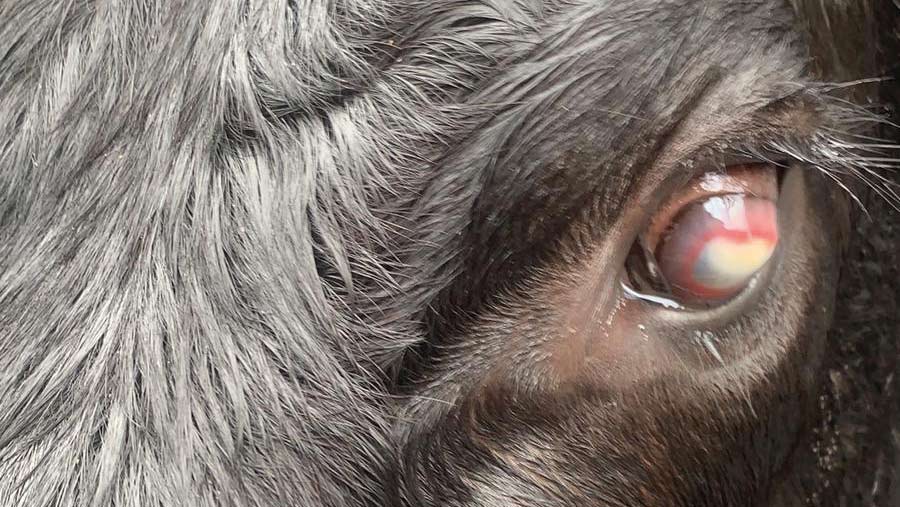New Forest eye infection in cattle: treatment and prevention
 The infection causes the eye to become cloudy and can lead to permanent damage © Jim Beary
The infection causes the eye to become cloudy and can lead to permanent damage © Jim Beary New Forest eye is a highly contagious disease of the eye that can spread rapidly in summer months.
Prompt treatment and separation of infected animals is essential.
Guy Tomlinson of Daleside Veterinary Group advises how to treat and prevent this painful infection.
What is it?
New Forest eye, or pink eye, is an infection of the surface of the eye and the conjunctiva around the eye. It is most commonly seen in youngstock during the summer grazing period.
See also: Fly control in cattle: the options compared
What causes it?
New Forest eye is caused by the bacteria Moraxella bovis, which can be spread by flies as well as direct contact between cattle.
What are the symptoms?
Signs can be mild initially, with runny eyes and tear staining on the face. It can then develop to seeing pus around the eye, and the surface of the eye becoming cloudy. Left untreated, it can progress to cause ulceration and permanent damage to the eye.
It is painful, particularly in bright light, resulting in cattle often guarding or closing the affected eye.
How can it be treated?
Treatment usually involves a topical antibiotic ointment.
Antibiotic injection (with penicillin or oxytetracycline) can also be administered into the eyelid. However, this can be more difficult to administer and requires excellent restraint of animals.
The key to successful treatment is to catch it early and start treatment straight away. Affected animals should be removed from the group to avoid spreading it to others in the group.
How can it be prevented?
Prevention involves keeping recently bought-in animals that may carry it separate from other cattle. Controlling flies through use of insecticides and preventing access to areas where flies are an issue (such as under trees and around standing water) also reduce the risk.
Minimising close contact between cattle – such as providing plenty of trough space for feeding concentrates – can also help reduce the spread within a group.
Vet Viewpoint: As part of Vet Viewpoint each month, we’ll bring you advice from an XLVets practice on a range of subjects.
